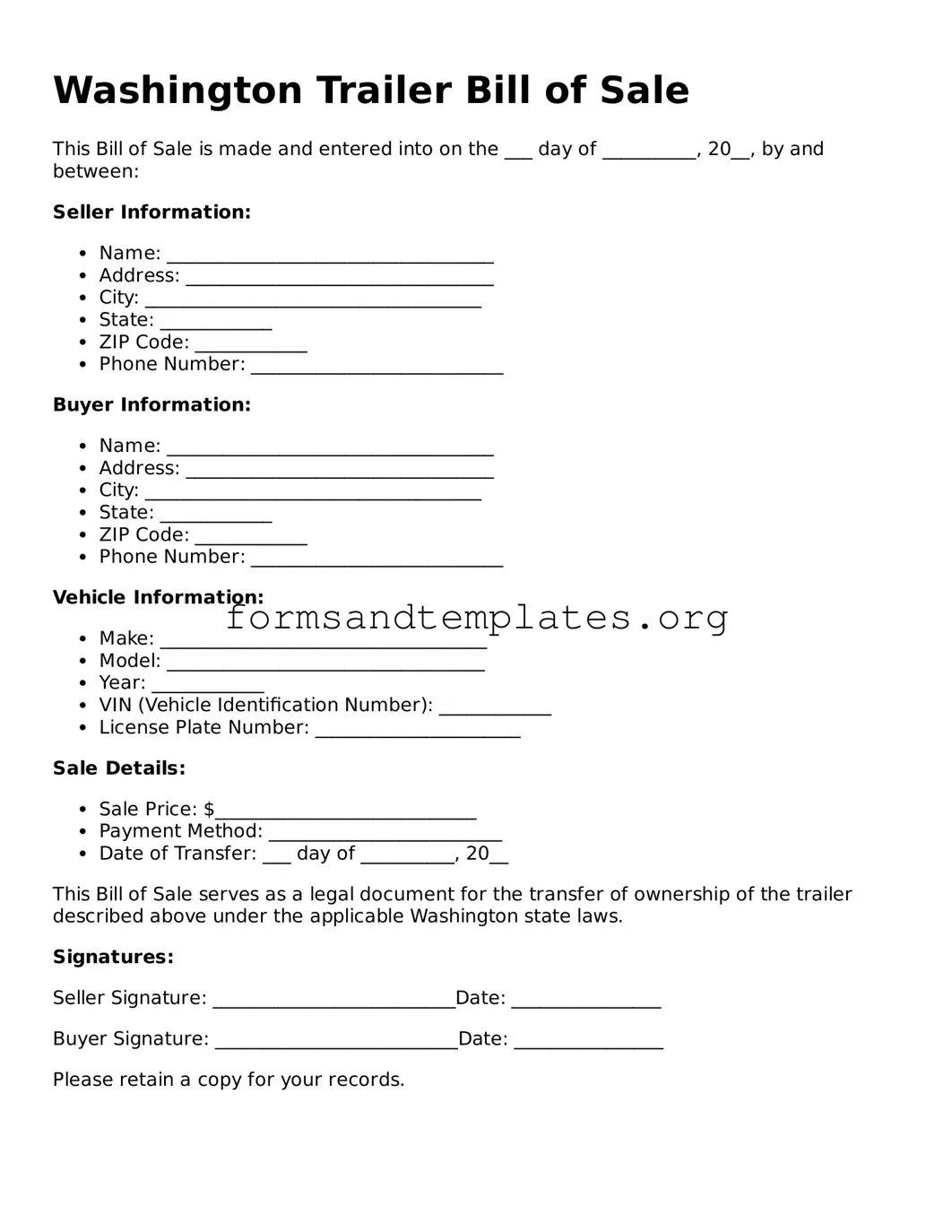Washington Trailer Bill of Sale
This Bill of Sale is made and entered into on the ___ day of __________, 20__, by and between:
Seller Information:
- Name: ___________________________________
- Address: _________________________________
- City: ____________________________________
- State: ____________
- ZIP Code: ____________
- Phone Number: ___________________________
Buyer Information:
- Name: ___________________________________
- Address: _________________________________
- City: ____________________________________
- State: ____________
- ZIP Code: ____________
- Phone Number: ___________________________
Vehicle Information:
- Make: ___________________________________
- Model: __________________________________
- Year: ____________
- VIN (Vehicle Identification Number): ____________
- License Plate Number: ______________________
Sale Details:
- Sale Price: $____________________________
- Payment Method: _________________________
- Date of Transfer: ___ day of __________, 20__
This Bill of Sale serves as a legal document for the transfer of ownership of the trailer described above under the applicable Washington state laws.
Signatures:
Seller Signature: __________________________Date: ________________
Buyer Signature: __________________________Date: ________________
Please retain a copy for your records.
